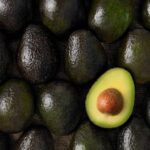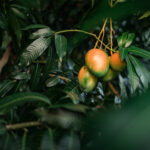The consolidation of Peruvian passion fruit

The current state of the Peruvian passion fruit industry is intriguing. According to the Association of Exporters (ADEX), the South American agricultural powerhouse exported 11,922 tons of passion fruit juice in 2023, accounting for 67% of its total passion fruit exports that year. This amounted to 17,822 tons valued at $66.932 million FOB.
David Casanova, the general director of the Directorate of Agrarian Technological Development (DDTA) at the National Institute for Agrarian Innovation (INIA), said the remainder is sold as fresh fruit for the domestic market.
Casanova told FreshFruitPortal.com that passion fruit production in Peru has experienced fluctuations in recent years due to factors like climate, market demand, and agricultural practices. To boost production, the executive recommended measures such as research and development, promoting farmer associations, quality certification, and strengthening the value chain.
To obtain a quality passion fruit, “natural factors, agricultural methods, and post-harvest processes are needed. These elements, together with geographical and climatic characteristics, distinguish us from other producers in the world. Peru offers high-quality passion fruit thanks to a combination of natural factors, agricultural techniques, and a strong commitment to sustainability. The diversity of varieties and eco-types, as well as favorable climatic conditions and export experience, position Peru as one of the world's leading passion fruit producers,” he added.
While passion fruit has traditionally been grown by small producers, Casanova said large agribusiness companies have shown a growing interest in recent years. Both small farmers and large firms play important roles, with a trend toward greater integration across the production chain to improve competitiveness and ensure sustainable productivity.
Regarding export potential, Casanova stressed he sees opportunities to expand passion fruit juice and derivative exports to markets in Europe, North America, South America, and Asia. ADEX export data shows key destination countries include the Netherlands, United States, Chile, France, and others.
“Our main competitors in the region are Colombia, which has a long tradition of passion fruit cultivation and a wide variety of climates that allow year-round production, Brazil, which is one of the world's largest producers of tropical fruits, and Ecuador, which has a significant production, especially on the coast. Competition in the passion fruit market is intense, but Peru has significant advantages that enable it to position itself as an important player at the international level,” he concluded.
Casanova also emphasized the importance of Peru's National Agrifood Health and Quality Service in monitoring pests and diseases, as well as the marketing support provided by Agromercado under the Ministry of Agrarian Development and Irrigation.
Passion fruit is native to the Amazon region and can be grown from Ica to Piura on the Peruvian coast, as well as in the warm inter-Andean valleys. Casanova stated that Peru's climate, with average temperatures of 75-82°F (24-28°C) and rainfall of 900-2000 mm per year, provides ideal conditions for high-quality passion fruit production, especially in areas 984-2952 feet (300-900 meters) above sea level.
With its favorable natural factors, agricultural expertise, and commitment to sustainability, Peru is positioning itself as a global leader in passion fruit production and export. Casanova highlighted the country's diversity of varieties, climatic advantages, and post-harvest processes as key competitive strengths that distinguish Peruvian passion fruit in the international market.














































